2020 Bentley Flying Spur review, test drive
The all-new Bentley Flying Spur is said to be better to drive and to be driven around in. We find out how true that is.
Published on Oct 17, 2019 10:58:00 AM
26,253 Views
Follow us on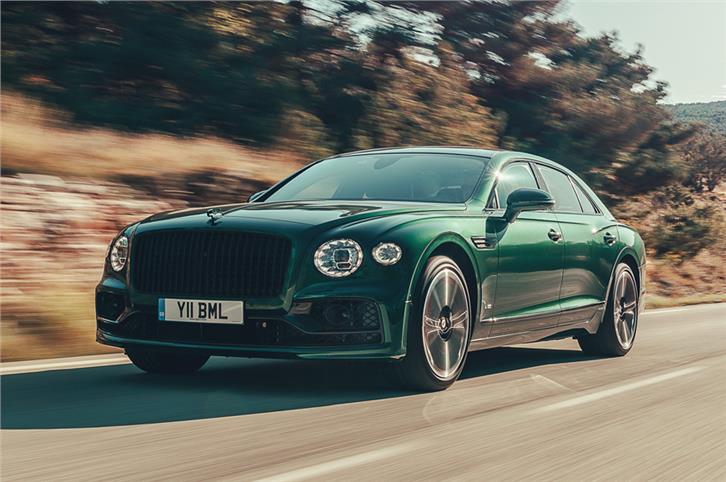
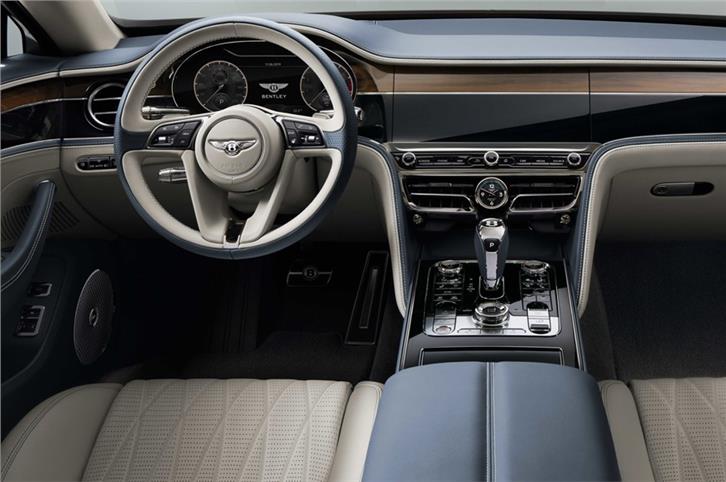
Bentley insiders say its new, third-generation Flying Spur has taken the brand to an all-new level. This is not just because it is much more accomplished to drive now, but being driven around in the passenger seat is also a much nicer experience. In addition, the still very British company also claims no one does handmade wood, leather, and chrome quite as well. So just how good is the new third-generation Flying Spur?
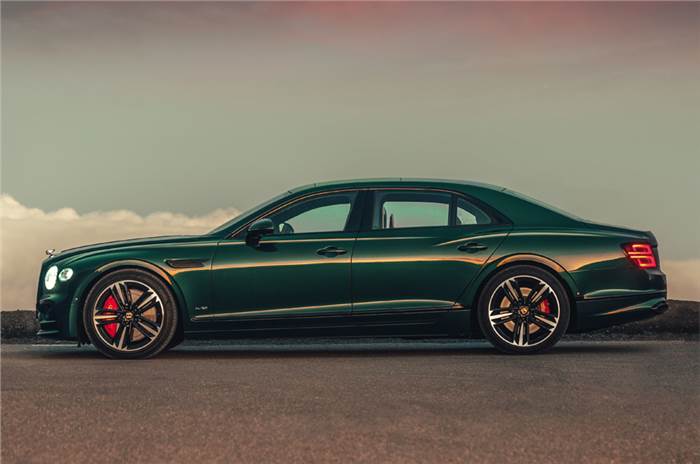
What is it?
It certainly is imposing to look at, and part of that is down to the size. The new car is built on a 130mm longer wheelbase, and this 5.3m-long and 2.2m-wide car looks so long in the flesh, it seems like a stretched- out battleship. The new design has an even wider and more imposing grille at the front, round crystalline LED lamps sunk into its 'bluff' nose and plenty of high-quality chrome on the chin. Moving the wheels further out now gives it an even more planted look, and what makes it look more hunkered down is that it gets a tighter-fitting roof and muscular haunches; the latter now replete with sinuous lines. Even the rear is imposing and nigh on perfectly executed. The passenger cabin, for one, sits inset of the bulk of the car, and what adds to the imposing look is the 'table-top'-like boot lid, with its crisply defined lines. Up front, the wings of the new Flying B mascot are opaque and illuminated, to celebrate 100 years of the brand being around. And the cool bit is, press a button and it now disappears into the 'radiator'.
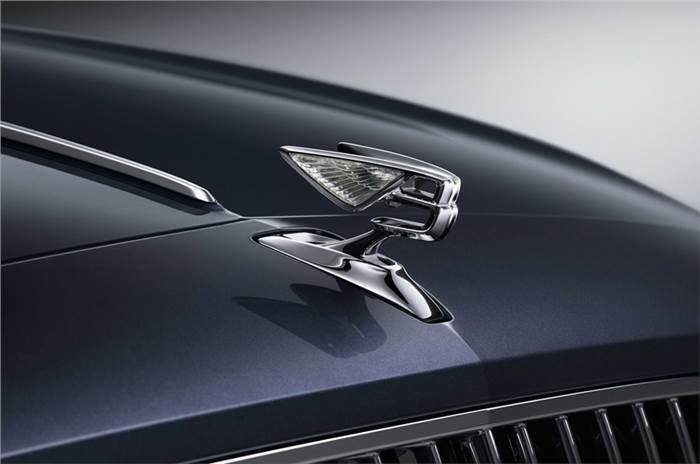
Under the skin, the new Flying Spur shares its MSB platform with the new Porsche Panamera, and, as a result, is much stiffer than the outgoing car. Now also 38kg lighter, it is powered by a 6.0-litre W12 engine, with the more compact length of the engine allowing the Bentley to have a relatively shorter nose. Twin turbochargers help the 6.0-litre engine put out 635hp and a pavement-crushing 900Nm of torque. It now also gets cylinder de-activation that makes this motor 15 percent more efficient. It has the requisite performance too. Use launch control and you can achieve a 0-100kph time of just 3.7sec – very quick for a car of this weight – and top speed achievable is 333kph. The Flying Spur also gets an 8-speed dual-clutch transmission that's good enough to handle the massive torque of the engine, heavily rear-biased all-wheel-drive and three-chamber air suspension that now has 60 percent more air in the system than before. What helps the big 2.4-tonne car turn into corners faster is rear-wheel steering, and the new Flying Spur also gets a 48-volt active anti-roll bar system that keeps body roll in check. Also new is a torque vectoring system that gently brakes the inside wheels to help the car rotate in a corner.
What's it like on the inside?
The dash of the new Flying Spur is similar to that of the Continental. Its party piece remains the revolving touchscreen that flips once and displays three chrome-ringed dials, or flips again to reveal a plain wooden panel. What also gets your attention is the quilted, three- dimensional leather finish on the door pads.

Examine the dash closely and what hits you in the face is the incredibly high-quality levels – the perfectly finished lacquered wood, the tastefully executed chrome highlights and then, wherever you look, everything is draped in the highest quality leather. The wide expanse of wood on the dash and the centre console, in fact, looks more like a piece of Victorian furniture than a car interior. Does anyone do high-quality traditional interiors better than Bentley? The answer is no. While the interiors work well in general, functionality in some areas is less than ideal. Controlling fan speed, for example, is fiddly. As on many Audis, you need to hit a mode switch, select fan and then rotate a dial to either slow down or speed it up. . . something that's near impossible to do safely when behind the wheel. And plastic quality on the steering wheel – something you touch and feel all the time – is similar to that of a VW or a Skoda; other buttons around the cabin are better built.
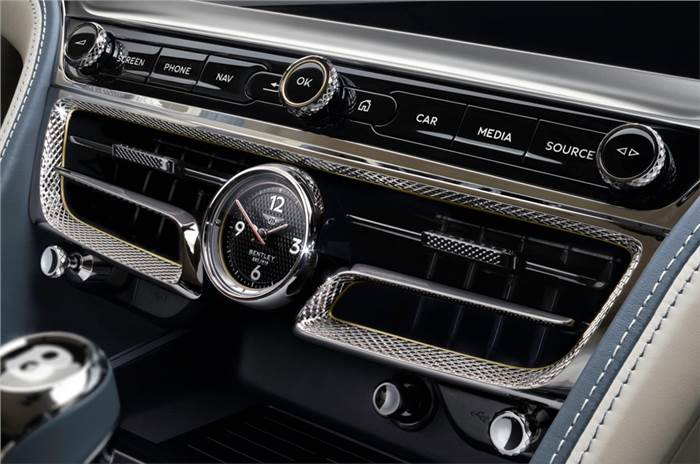
Comfort in the back is very impressive. Step into the rear and the seat height is just perfect, not too high not too low. And what helps ingress massively is that the doors open wide. The slightly longer wheelbase results in a bit more legroom, but I still feel there should have been a bit more, all things considered. The seat, however, is just superb. The backrest reclines a few degrees, the seats can be cooled, heated and will even prod you in the back or massage you if you wish. Cushioning is soft and sumptuous, the thick seats offer very good support on long drives and never sag, and what betters this is that shoulder, middle and lower back support are just super. The long seat base even offers you masses of thigh support. There's no Pullman seat that allows you to stretch out completely, and the individual iPad-sized tablets, placed on the front seatbacks reduce rear passenger visibility, but what's nice is that you get a new version of the removable touchscreen controller that's placed above the rear vents and controls all manner of functions, including the lights, blinds, sunroof, and entertainment.

What's it like to drive?
What enhances comfort in the back is that the ride quality is brilliant. Select 'Comfort' on the chrome dial at the front and the car seems to just waft along over rough patches and undulations, the three-chamber air springs, adaptive dampers and slackened anti-roll bars doing their best to soak up the bumps. And that's not it, Bentley has used a new bit of tech too – ride-height sensors, which also help in keeping the car flat over bumps. Despite this, there is a still bit of pitch on some of the less-than- perfectly paved roads, and what makes it worse is that there is no intermediate setting between 'Comfort' and 'Sport' to tighten up the suspension marginally. Still, ride in general is very pliant, and what makes the experience nicer still is that the suspension works in near silence – no thuds, thumps or 'twacks' getting through to the cabin.
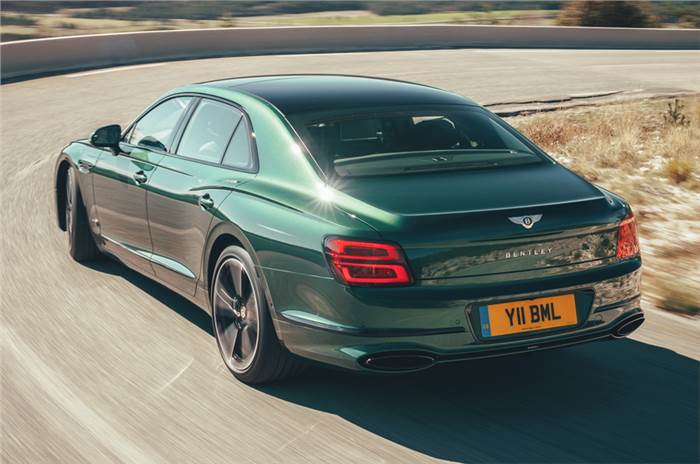
The imperious manner in which the Flying Spur wafts along also makes it feel effortless to drive. A lot of this is down to the massive W12 engine that is near silent at speeds below 3,000rpm. And tap the throttle and the urge you get from the humongous 900 Nm of torque is so strong and effortless, driving it with even a light foot feels just addictive. Remember this is in Comfort mode, where the car is metaphorically loose-limbed and relaxed.
Ask it to sprint, in 'Sport', and the beast from under the bonnet truly comes alive. Squeeze the accelerator hard, engage all that heady performance, and it feels like a freight train has hit you in the back. Keep your right foot planted and it continues to accelerate at a rate that makes you hold onto your breath momentarily, the twin-clutch gearbox going from one gear to the next with only the slightest hiccup.
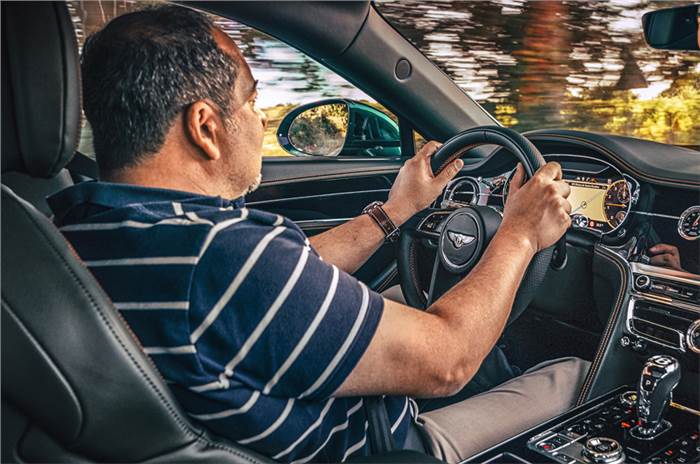
Remember back in the day when you could wreck a dual-clutch 'box with only 250Nm; this one can take 900!
With its fat tyres, tightened-up air suspension, active anti-roll bars and rear-wheel steering, the Bentley also drives around corners like no other big, heavy car. Turn-in is positive and it handles its mass in corners well even at medium speeds, and you will appreciate that. Push harder, however, and the Flying Spur really comes alive and shrinks around you. And the harder you drive it, the more you push it, the tighter, neater and incredibly lighter it feels from behind the wheel. Overall agility and poise around corners are in fact so good, the Flying Spur drives like something just half its size; no mean feat. It's even nicer to drive than the two-door Continental. The 420mm steel discs, however, do need more bite and stopping, especially on the way into corners, as you can feel the mass of the car struggling to slow down.
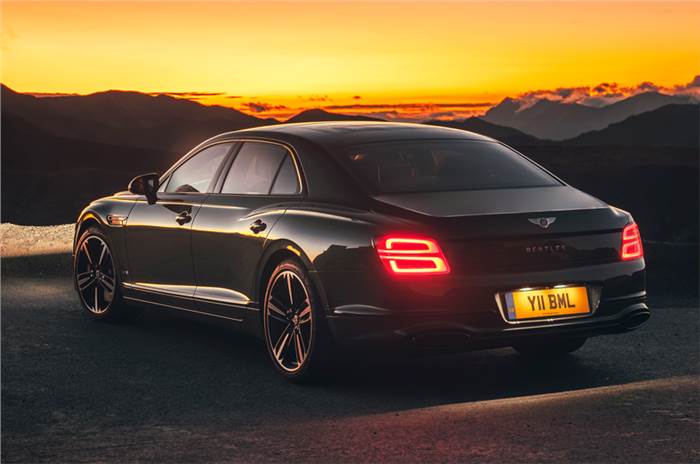
Should you buy one?
Expected in India around the middle of the next year at a base price of Rs 4.06 crore (ex-showroom), the new Flying Spur is right up there among the best cars in the world. Yes, slightly more legroom in the back would have helped, the brakes need more stopping power, and, for India, you will need smaller wheels. The new Flying Spur, however, remains a super luxury car that can do both – keep its passengers incredibly comfortable in the rear and also absolutely delighted from behind the wheel. Very, very few cars can do that; this clearly is one of the best Bentleys ever.
Tech Specs 
Copyright (c) Autocar India. All rights reserved.



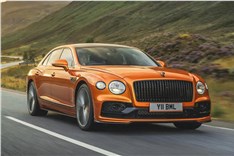
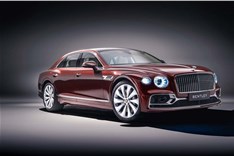

 Engine
Engine Transmission
Transmission Efficiency
Efficiency Acceleration
Acceleration Body
Body Suspension
Suspension Steering
Steering Brakes
Brakes Dimensions
Dimensions
Comments
Member Login
Personal Details
No comments yet. Be the first to comment.